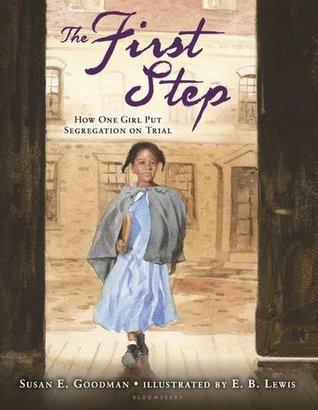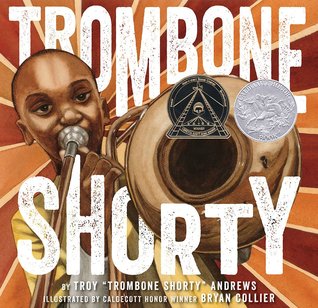Recently, lots of people have asked how I keep up with new books. I've been thinking about that and it isn't really one thing that I do. Rather, I check in with lots of people who read far more than I do and who are generous with their sharing of the books they read/anticipate. Since so many people have asked me lately, I thought I'd share the people/sites I rely on regularly.
John Schu reviews books daily on his blog, Watch. Connect. Read. His blog is full of information about new books, author interviews and more. One of my favorite John Schu resources is his
Book Release Calendar. This is a public calendar that shares release dates for new titles in children's literature. I tend to check this every few weeks and look up books that are coming up soon that I want to check out. It is definitely one of my favorite resources for keeping up with new books.
Colby Sharp is another person whose blog I rely on to keep up with new books. Colby and John run several twitter chats that also focus on new books. Following people like Colby and John on Twitter is the one best way to keep up with new books in the children's book work.
100 Scope Notes by Travis Jonker is another important blog for anyone wanting to do a better job at keeping up with children's books.
Teri Lesesne (@ProfessorNana), Donalyn Miller (@donalynbooks), Katherine Sokolowski (@katsok), and JoEllen McCarthy (@JoEllenMcCarthy) are others I follow on Twitter to keep up with new books and book conversations.
There are so many great end of the year booklists on lots of blogs and sites. Award season has some great lists and ALA and NCTE have some great award lists each year. We Need Diverse Books has great lists, including these incredible End of the Year booklists. The Children's Literature Assembly publishes its list of notables each year.
Dylan Teut recently created 4 booklists of upcoming 2016 picture books. These lists on his blog are great resources if you are looking to see what is coming up!
Coming Soon: 2016 Picture Books Part ONE
Coming Soon: 2016 Picture Books Part TWO
Coming Soon: 2016 Picture Books Part THREE
Coming Soon: 2016 Picture Books Part FOUR
I subscribe to Publishers Weekly and Horn Book emails. I get information about new books from both of these email subscriptions. (Like this one on the Most Anticipated 2016 Children's Books from PW) I get the real copy of the Horn Book Magazine in the mail every 2 months.
I subscribe to the Nerdy Book Club blog and learn about so many books and authors there.
I join the monthly #titletalk Twitter chat and add books to my list from that amazing chat run by Donalyn Miller and Colby Sharp.
I follow hashtags like #bookaday (invented by Donalyn Miller) to keep up with what new books others are reading.
There are websites like The Sweet Sixteens that highlight debut authors that I check in on every so often.
I love to pick up an Indie Kids' Next list when I am at Cover to Cover. I also check these online every month or so.
Keeping up with children's books takes a few minutes each day. Checking in with readers from around the world, visiting Cover to Cover bookstore and listening to Beth and Sally talk about new books, attending conferences and spending time in the book/vendor area area all part of my routine. It never seems like work to keep up with books and it never seems like I can actually keep up! But keeping up with children's books is the most important part of my work with kids, I think. And once I know who to follow and learn from, it isn't so hard to do at all! One of my favorite hobbies, actually:-)
John Schu reviews books daily on his blog, Watch. Connect. Read. His blog is full of information about new books, author interviews and more. One of my favorite John Schu resources is his
Book Release Calendar. This is a public calendar that shares release dates for new titles in children's literature. I tend to check this every few weeks and look up books that are coming up soon that I want to check out. It is definitely one of my favorite resources for keeping up with new books.
Colby Sharp is another person whose blog I rely on to keep up with new books. Colby and John run several twitter chats that also focus on new books. Following people like Colby and John on Twitter is the one best way to keep up with new books in the children's book work.
100 Scope Notes by Travis Jonker is another important blog for anyone wanting to do a better job at keeping up with children's books.
Teri Lesesne (@ProfessorNana), Donalyn Miller (@donalynbooks), Katherine Sokolowski (@katsok), and JoEllen McCarthy (@JoEllenMcCarthy) are others I follow on Twitter to keep up with new books and book conversations.
There are so many great end of the year booklists on lots of blogs and sites. Award season has some great lists and ALA and NCTE have some great award lists each year. We Need Diverse Books has great lists, including these incredible End of the Year booklists. The Children's Literature Assembly publishes its list of notables each year.
Dylan Teut recently created 4 booklists of upcoming 2016 picture books. These lists on his blog are great resources if you are looking to see what is coming up!
Coming Soon: 2016 Picture Books Part ONE
Coming Soon: 2016 Picture Books Part TWO
Coming Soon: 2016 Picture Books Part THREE
Coming Soon: 2016 Picture Books Part FOUR
I subscribe to Publishers Weekly and Horn Book emails. I get information about new books from both of these email subscriptions. (Like this one on the Most Anticipated 2016 Children's Books from PW) I get the real copy of the Horn Book Magazine in the mail every 2 months.
I subscribe to the Nerdy Book Club blog and learn about so many books and authors there.
I join the monthly #titletalk Twitter chat and add books to my list from that amazing chat run by Donalyn Miller and Colby Sharp.
I follow hashtags like #bookaday (invented by Donalyn Miller) to keep up with what new books others are reading.
There are websites like The Sweet Sixteens that highlight debut authors that I check in on every so often.
I love to pick up an Indie Kids' Next list when I am at Cover to Cover. I also check these online every month or so.
Keeping up with children's books takes a few minutes each day. Checking in with readers from around the world, visiting Cover to Cover bookstore and listening to Beth and Sally talk about new books, attending conferences and spending time in the book/vendor area area all part of my routine. It never seems like work to keep up with books and it never seems like I can actually keep up! But keeping up with children's books is the most important part of my work with kids, I think. And once I know who to follow and learn from, it isn't so hard to do at all! One of my favorite hobbies, actually:-)






























